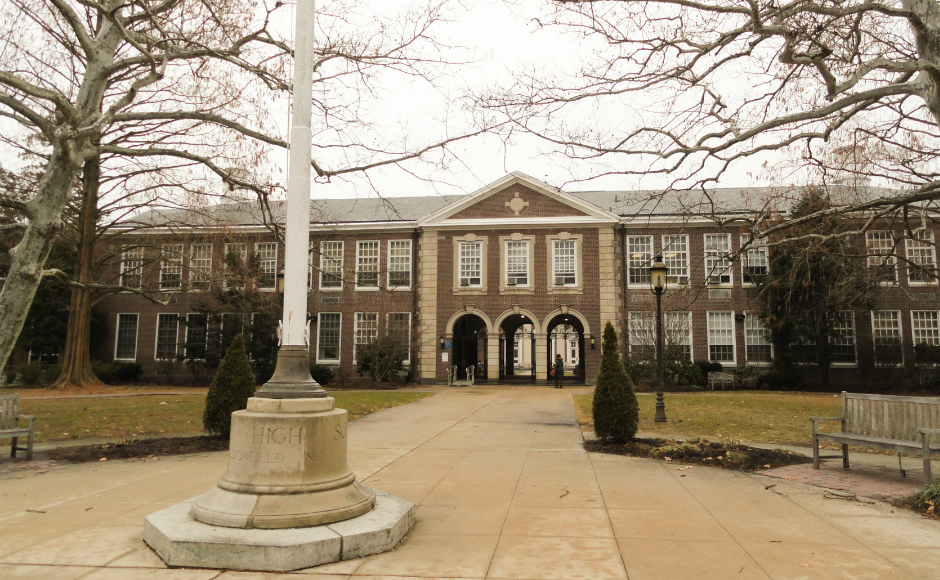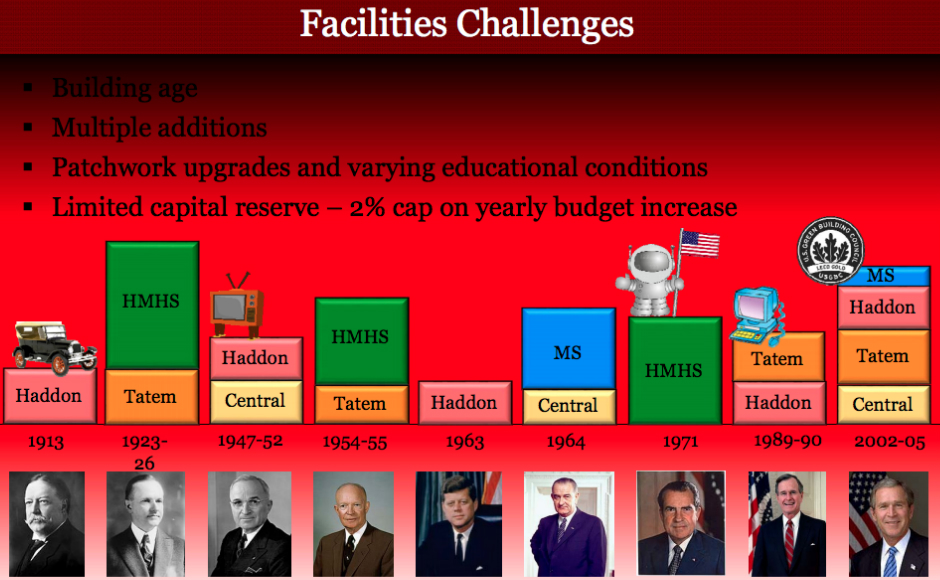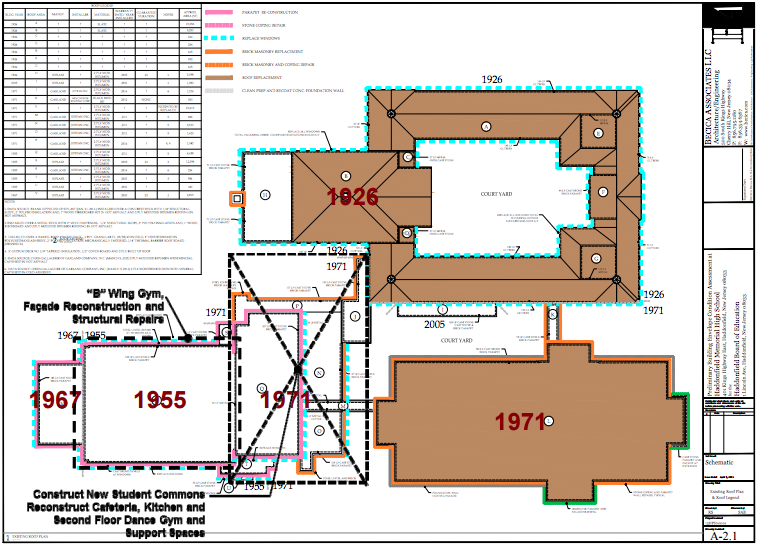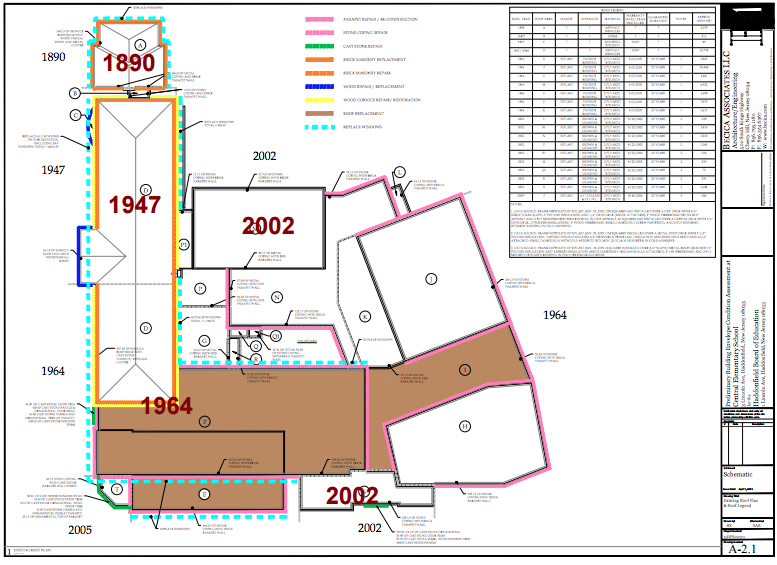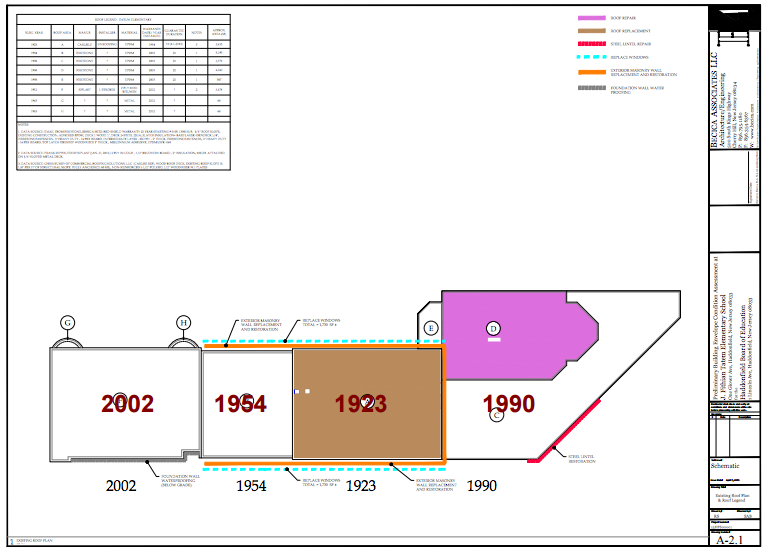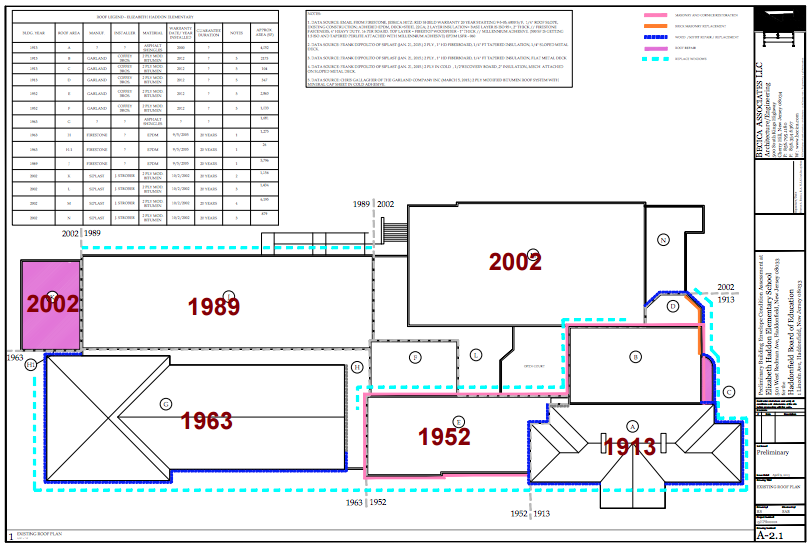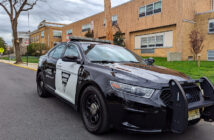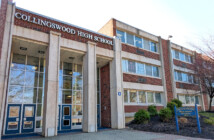The district will ask residents to authorize infrastructure repairs to decades-old buildings in need of imminent work. As much as 40 percent of the cost may be aid-eligible.
By Matt Skoufalos
Last year, the Haddon Township Board of Education passed a $39-million school bond referendum that then-Superintendent Nancy Ward described as “meat and potatoes…no dessert.”
On or around January 26, 2016, the Haddonfield Board of Education will ask its borough taxpayers to consider a $51.16-million school bond that is less like a meal and more like preventive medicine for the body politic.
“You may not have a gym, a cafeteria, a stadium, or phones,” if the repairs that dollar figure represents aren’t completed soon, said Haddonfield Superintendent Richard Perry. “And you may have, eventually, the buildings in danger of falling down.”
After presenting the details of the questions to residents in an open forum last week, Perry said residents mostly asked things like “How did we get here?”, “Why wasn’t this covered in previous bonds?”, and, “How are we going to make sure that the school district maintains the buildings as decades pass?”
Yet, Perry said, “even the people that were concerned about the tax impact are concerned about the state of the buildings.”
“It’s not about building new buildings or getting land, it’s about keeping our buildings standing up,” he said. “We wanted to add classrooms, add technology, put in structures that could support the new curriculum from an educational viewpoint, but after that, we felt that the number ($80 million) was too high.”
Repairing a patchwork infrastructure
The immediacy of those facilities concerns proved themselves during the 2014-15 school year, when the district had to address collapsing entranceways at Tatem Elementary School and brace up the Haddonfield Memorial High School “B” gym and cafeteria. The investigation and repairs cost $1.4 million, Perry said, about half of which went to repairs.
“It will be safe to use for 18 months, but after that we have to either repair it permanently through the bond referendum or figure out what we have to do possibly without a [high school]gym or a cafeteria,” the superintendent said.
Perry described the decades-old infrastructure of the school district as “patchwork,” periodically updated, and as having “structural designs that interact or counter each other.” The facilities survey revealed corroded steel, decayed wood, and ruined concrete cinder blocks. Some buildings hadn’t been updated since the Nixon administration.
“We didn’t know we’d find this much erosion,” he said. “A lot of it has to do with weathering, and some of it has to do with us not doing an in-depth review. It’s been deferred maintenance.”
Perry said that Haddonfield is not alone among school districts in deferred maintenance obligations; the challenge is believed to be a $270-billion-dollar concern nationwide. Under the state-imposed, annual 2-percent-budget-cap increase, saving for capital improvements is often an impossibility given annually increasing costs in local operating expenses, energy, insurance, and salaries and benefits. The district is also carrying $16 million in outstanding debt that will be retired “in the early 2020’s,” Perry said.
“All our infrastructure—roads, buildings, bridges, our schools—we’re in charge of this, but really it’s part of the bigger picture,” he said.
Three questions
The scope of the repairs that are needed is so significant that the district should be able to stagger its bond obligation, selling off its debt as the work is completed, section by section, in the next three-to-five years, Perry said. Plus, 30 to 40 percent of every dollar that is approved by the voters is eligible for regular operating district (ROD) grant aid from the state of New Jersey.
The board has chosen to separate out the repairs into three questions. Question #1 would allocate $44.7 million to building envelope repairs, HVAC and electrical work, and replacing a district telephone system that is so old “we can’t get parts for it anymore,” Perry said. The money would also help renovate two existing rooms as multi-purpose labs for chemistry and home economics.
Question #2 would dedicate $5 million to construct two new classrooms at the Haddonfield Middle School and update the high-school cafeteria to make it capable of sustaining a common lunch period that will give the entire high school greater scheduling flexibility. Perry described the cafeteria as being used daily as a meeting space for advisors, clubs, extracurricular activities, and community organizations at night and after school.
“Curricular initiatives have changed since 1926 when they were built,” Perry said. “When Coolidge was president, they built a building for education at that time. The odds are it’s not going to be done for another 20 to 30 years.”
Question #3 would spend $1.43 million to renovate a high school track that Perry described as being “at the end of its lifecycle” and a historic stadium that has deteriorated with time.
The stadium at Haddonfield Memorial High School was built in the early 1930’s, Perry said, one of a handful of identical New-Deal-era constructions in Audubon, Collingswood, Haddon Heights—districts that have since passed million-dollar referenda to fix them.
“This stadium is historic,” Perry said. “If it continues to decay, we’ll have to tear it down. To put up a metal one is approximately $1 million. Why not fix the historic one that you have?”
Like the other repairs, approving track repairs** via a referendum means that the district will be able to receive 30 to 40 percent grant aid to finance the cost of the work as opposed to making those same repairs through its normal operating budget. (Stadium repairs are not eligible for ROD grant aid, but the track is because it can be used in physical education, Perry noted.)
“Our 2-percent cap every year increases our budget by $600,000,” Perry said. “To repair the track within our normal budget would expend the entirety of it. That’s why we’re putting it in the referendum.”
Financial impact
For a home valued at the borough average of approximately $485,000, the annual tax impact for the next 25 years is estimated to be around $330 at 3.75-percent interest, assuming 34 percent of the project costs are offset by debt service aid, Perry said. The superintendent believes that the costs of the project will be less if the project is fully funded at 40 percent of costs—and far less than if the repairs are left for future generations to manage.
“Buildings aren’t microorganisms that heal themselves,” Perry said. “If anything, the costs are going to go up because the buildings are going to continue to decay, and the cost to address these issues are going to increase over time. Somebody’s going to have to fix them, tear them down, or build something new.”
Perry said that the opportunity is a timely one for the borough to reinvest in its infrastructure given the availability of debt service and ROD grants in a low-interest-rate environment. He also pointed out that the questions will not resolve all the major projects on the horizon in the district, which include: adding new classroom space for expanding student rolls, remedying drainage issues at Radnor Field, and installing a driveway at Tatem Elementary School to alleviate pick-up and drop-off traffic.
Haddonfield Board of Education President Glen Moramarco said that voters “shouldn’t be afraid of the raw dollar total” of the referendum.
“They should look at the tax impact, which we hope will be within their means,” Moramarco said. “The number is deceptive. We’re going to get some debt service aid that is going to bring this number down, and when you spread this around over 25 years, it’s going to come down.”
Moramarco said he believes that borough residents “want to be supportive of the general goal, and they want to assure themselves that we aren’t doing any more than is necessary.
“We’re trying to focus on the real needs of the school buildings, and we’re trying to do it as economically as possible,” Moramarco said. “The upside is we’re tackling problems that need to be tackled.
“A lot of this stuff is going to have to be done eventually, and putting it off is going to make it more expensive in the future,” he said.
**An earlier version of this story mistakenly reported that stadium improvements are eligible for assistive financing; they are not, but the track repairs are.
Please support NJ Pen with a subscription. Get e-mails, or follow us on Facebook, Twitter, and Instagram.

